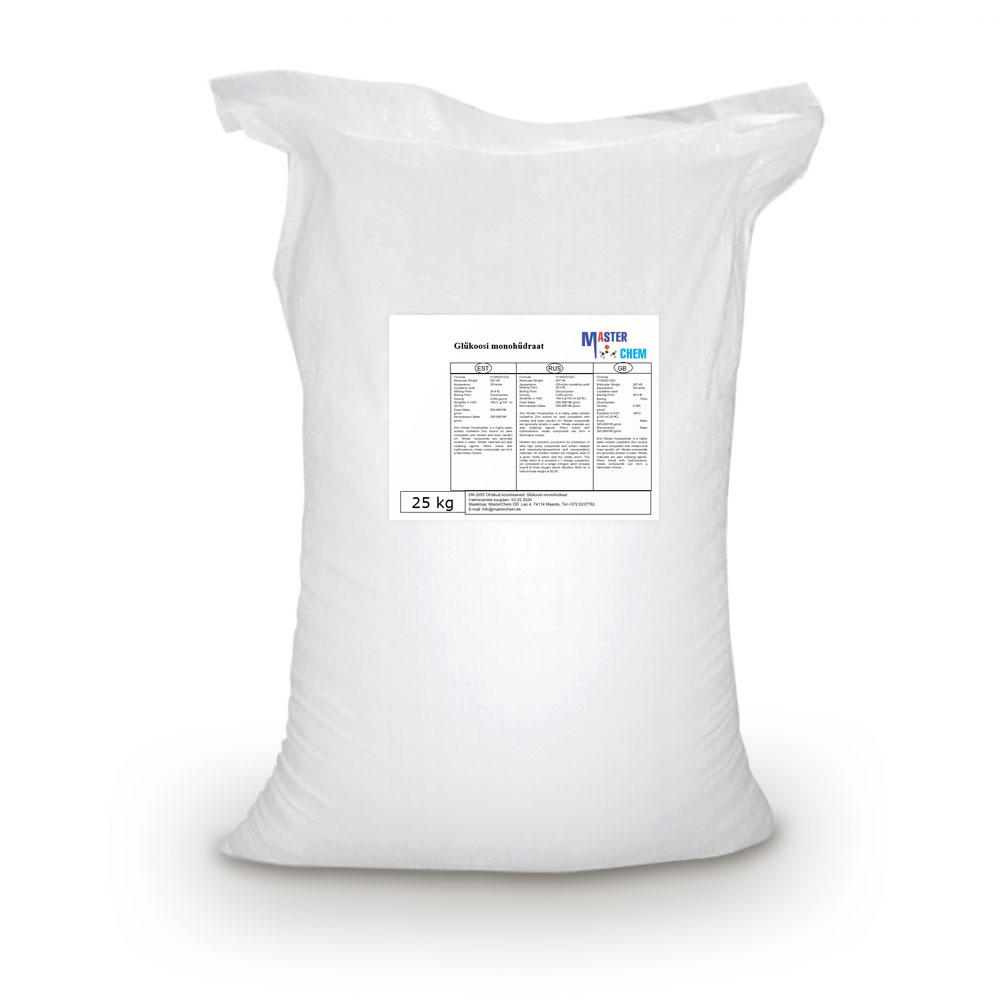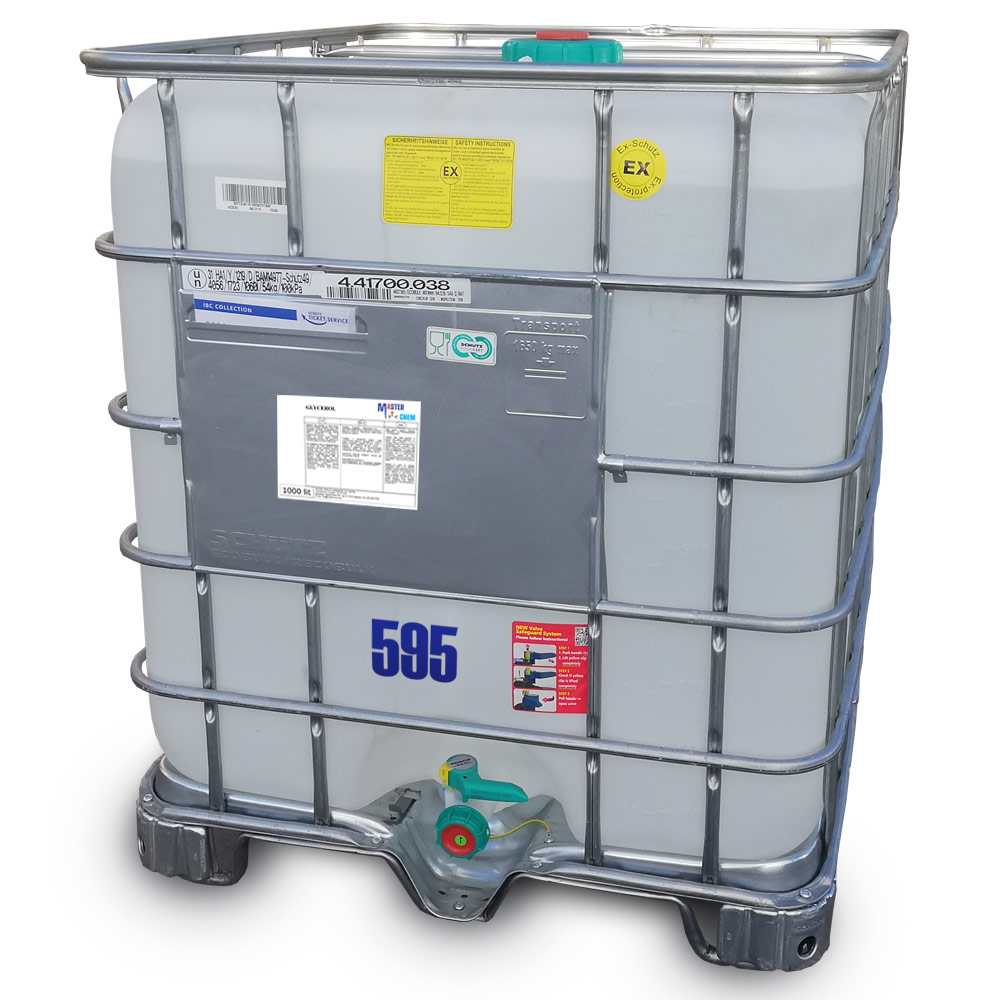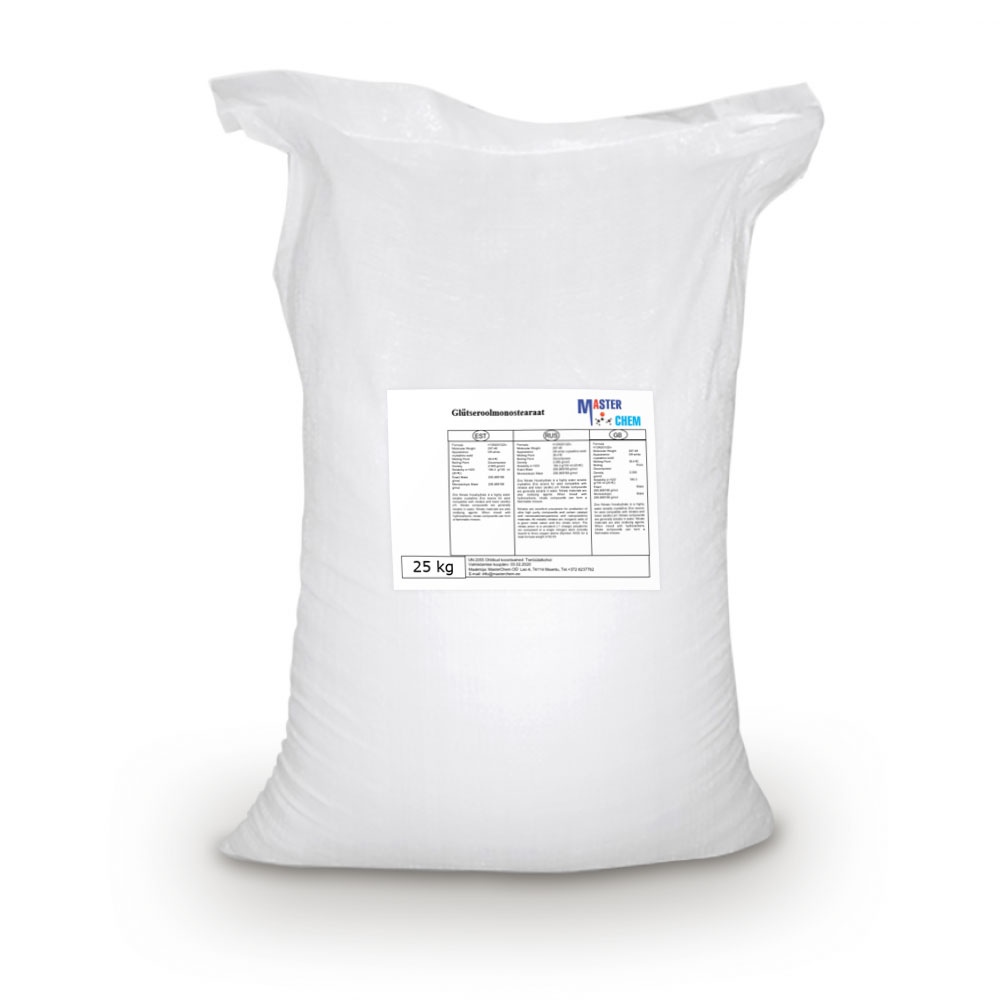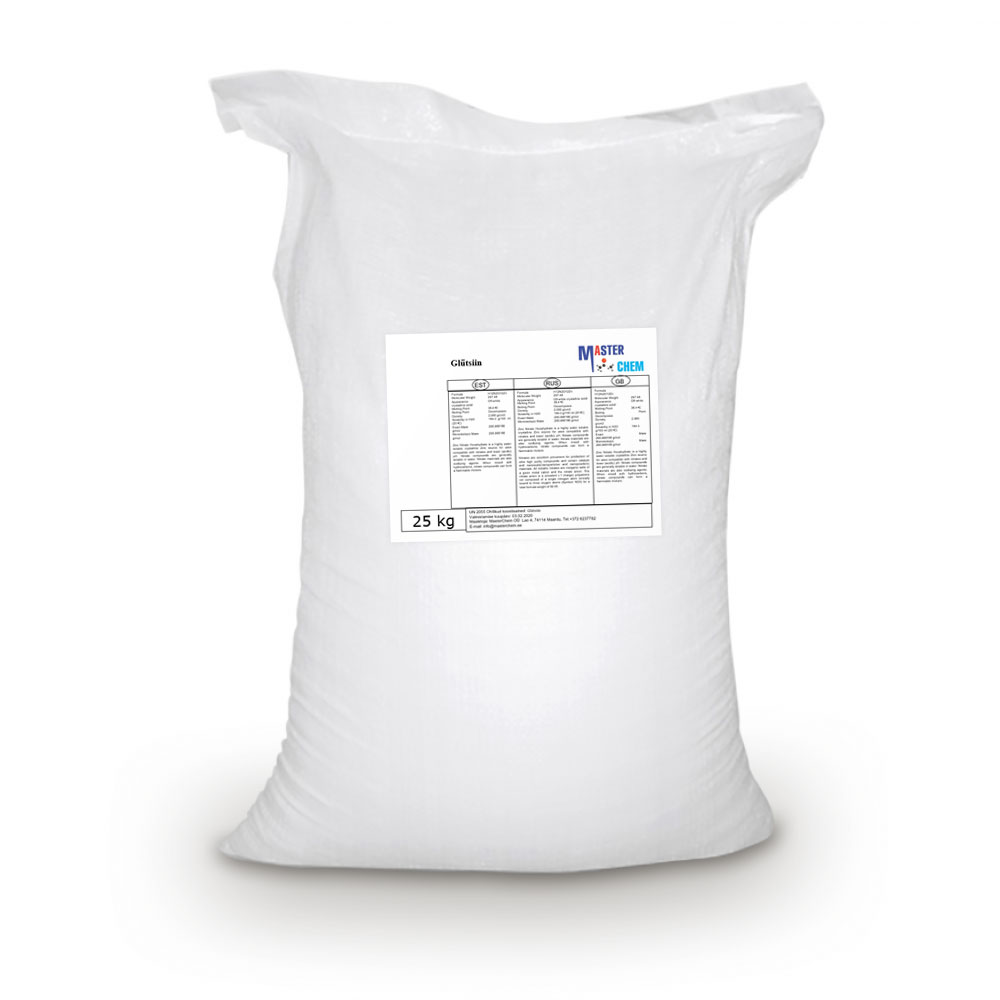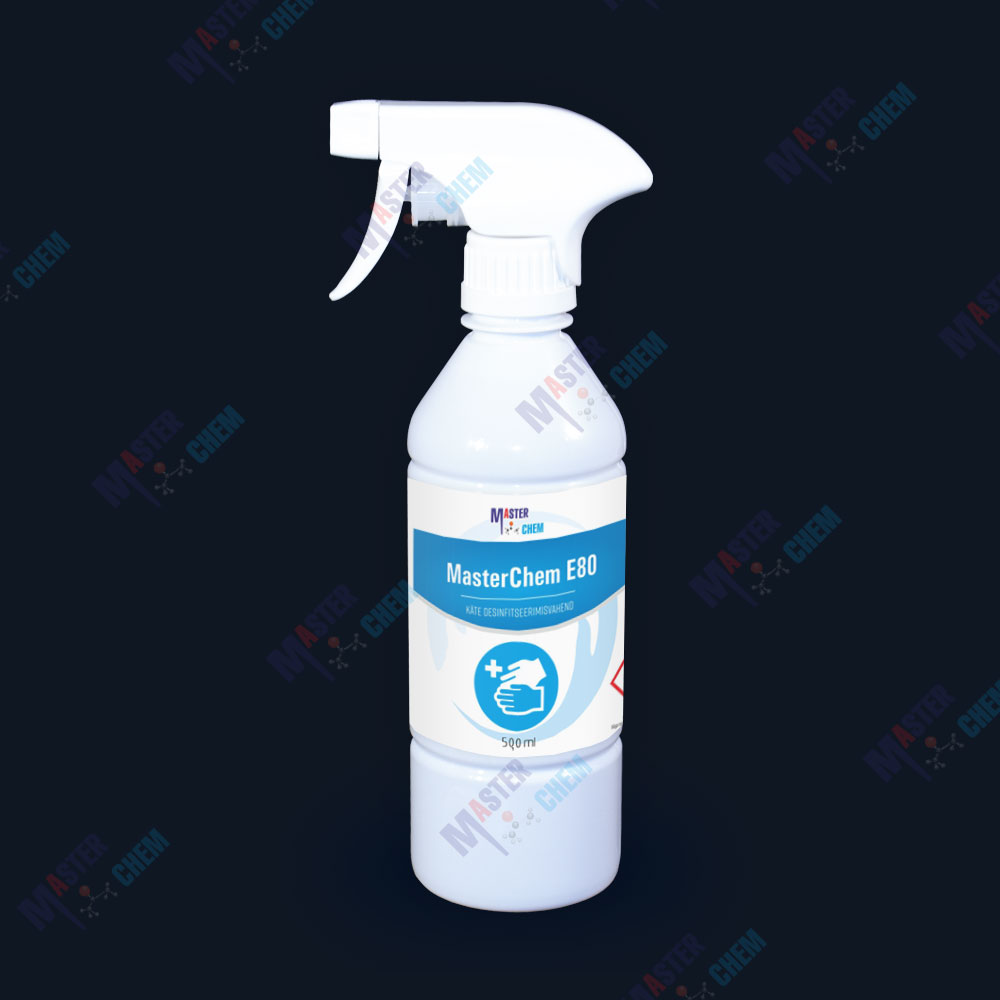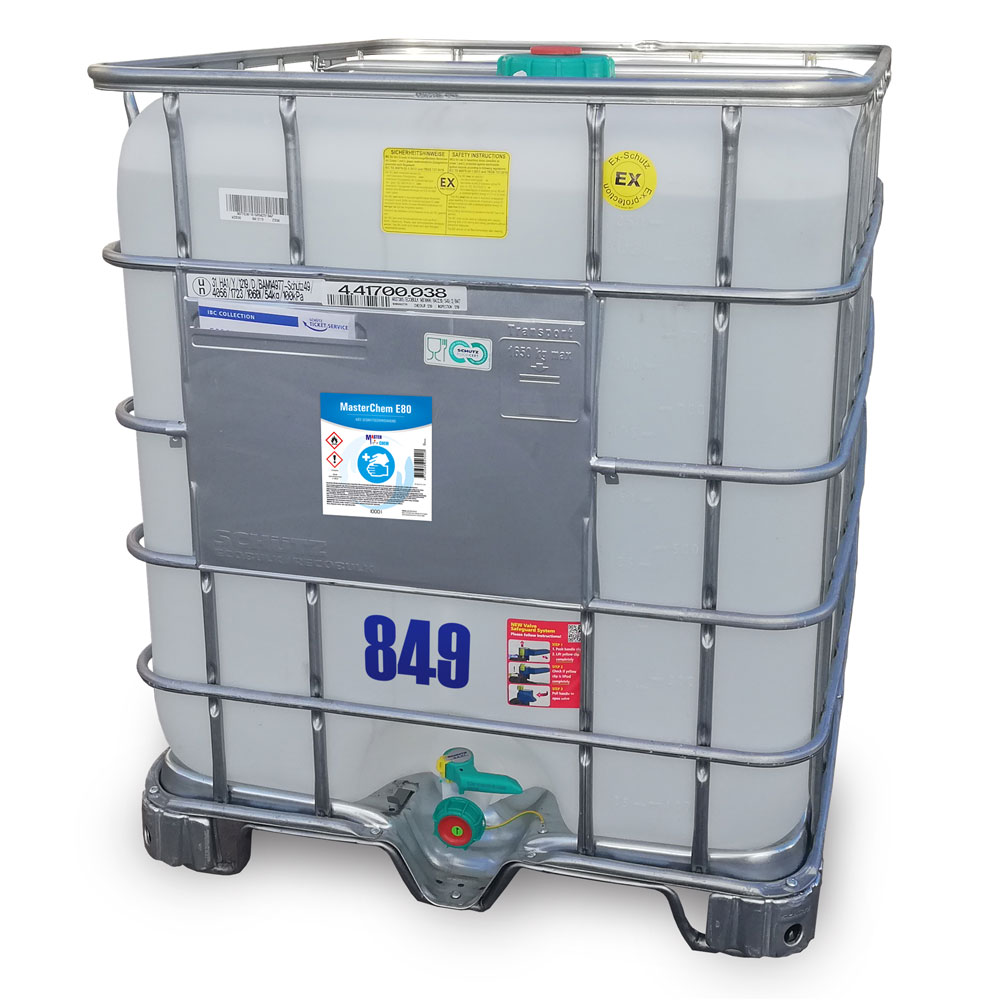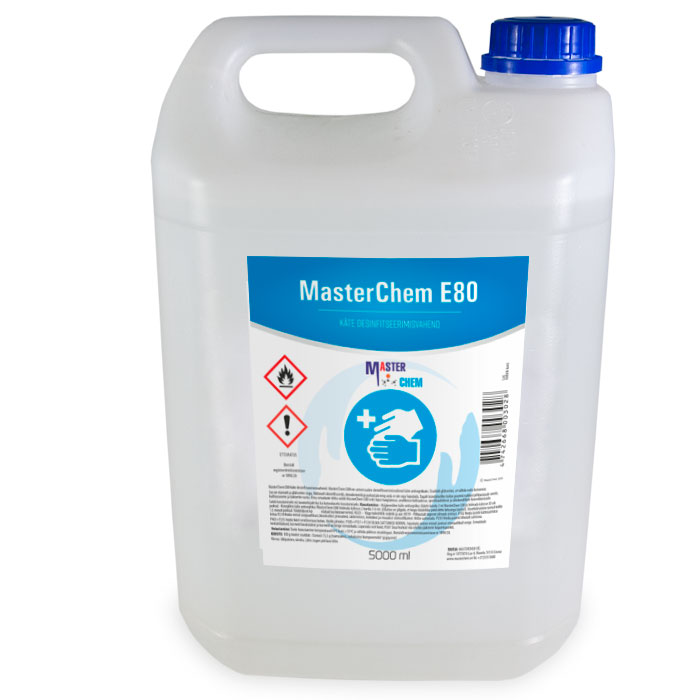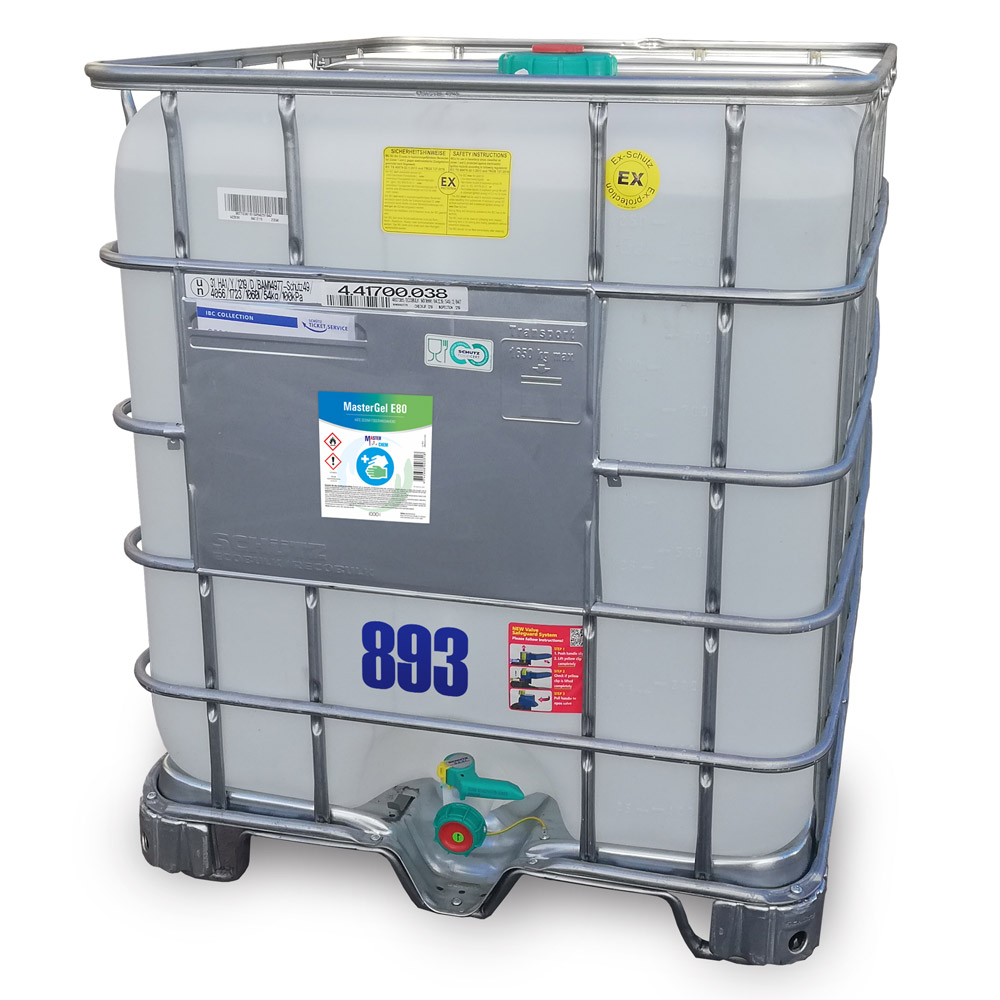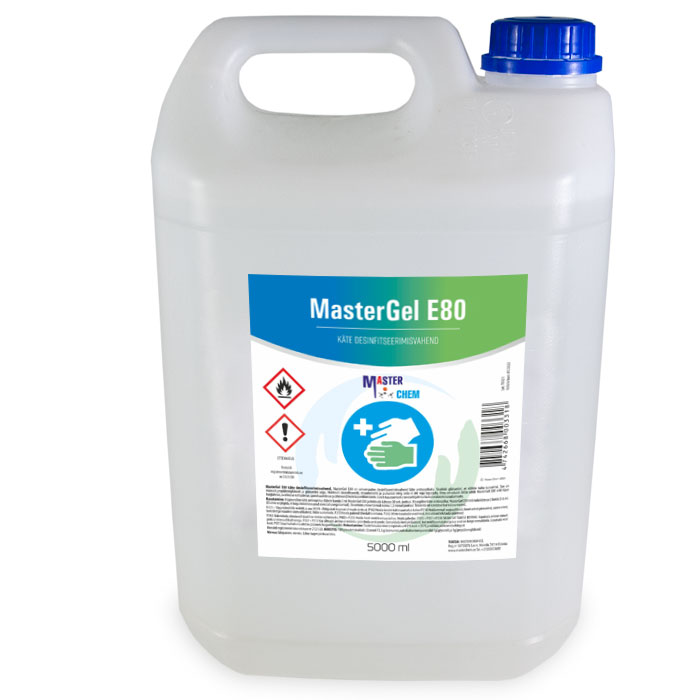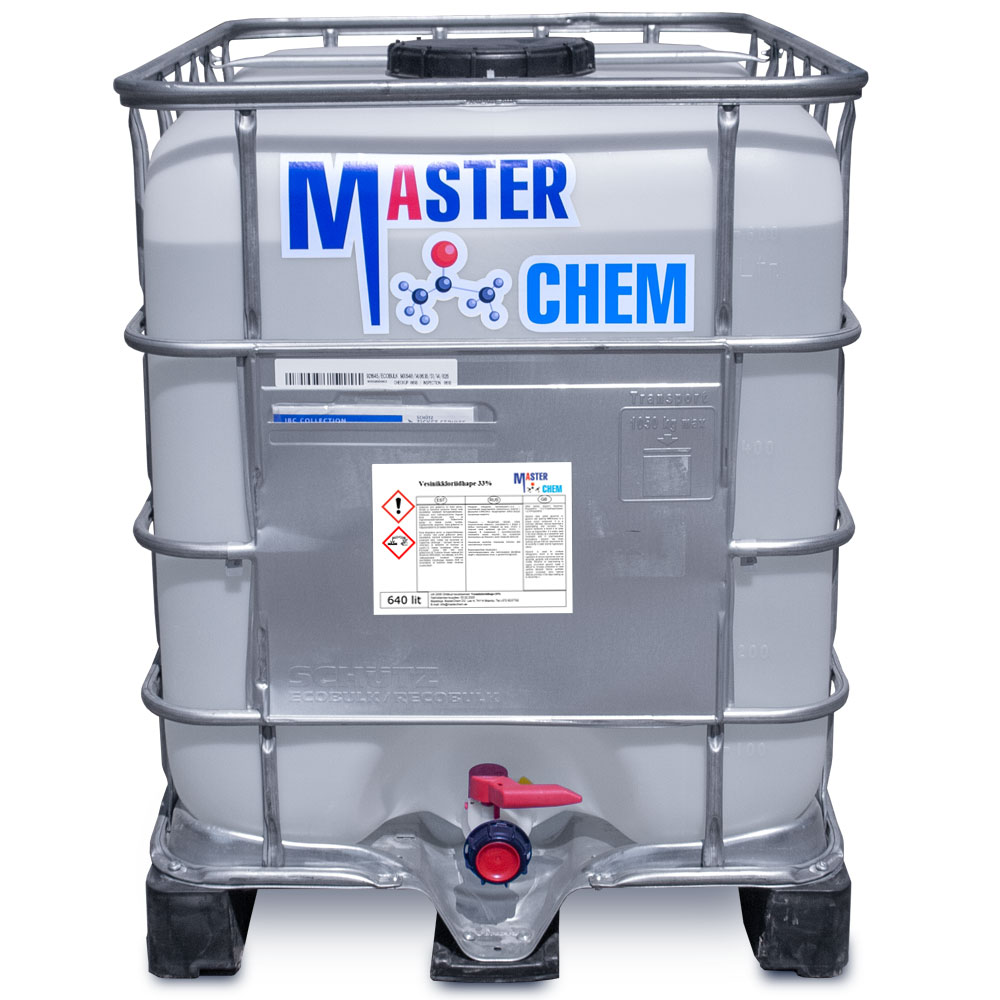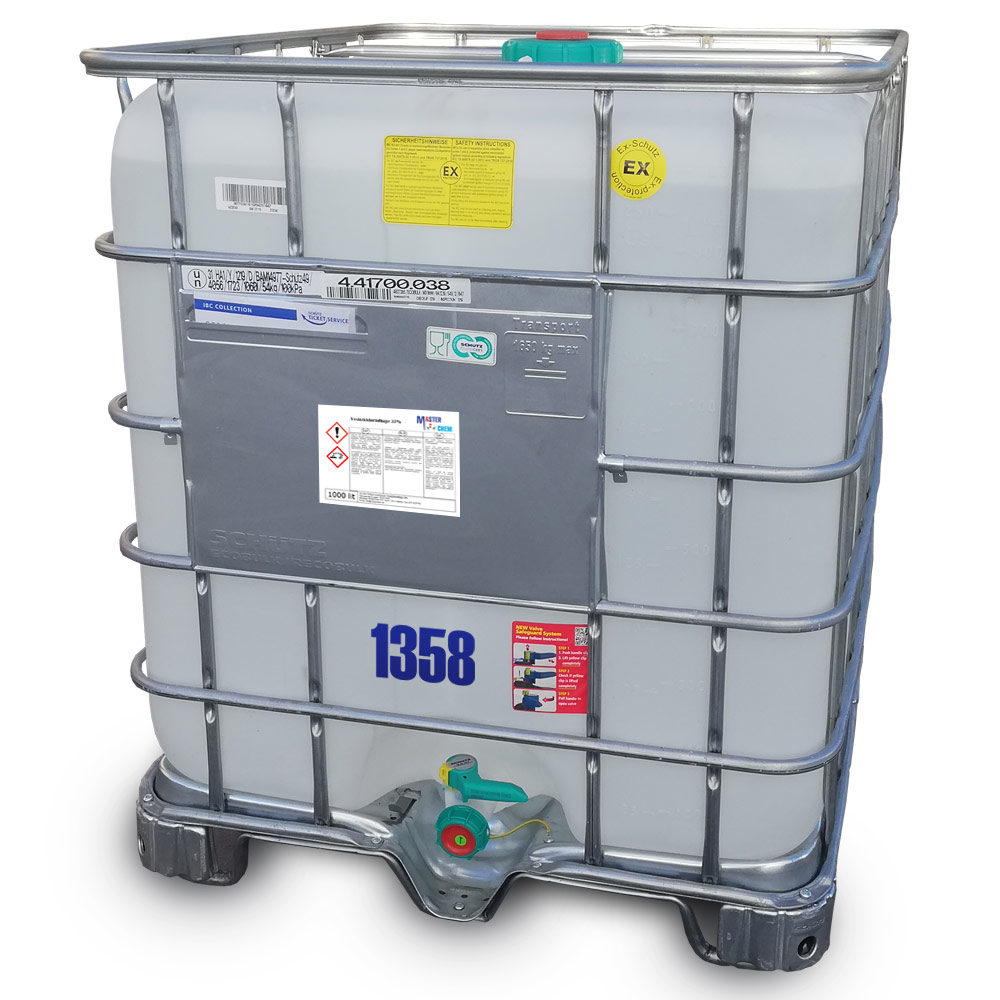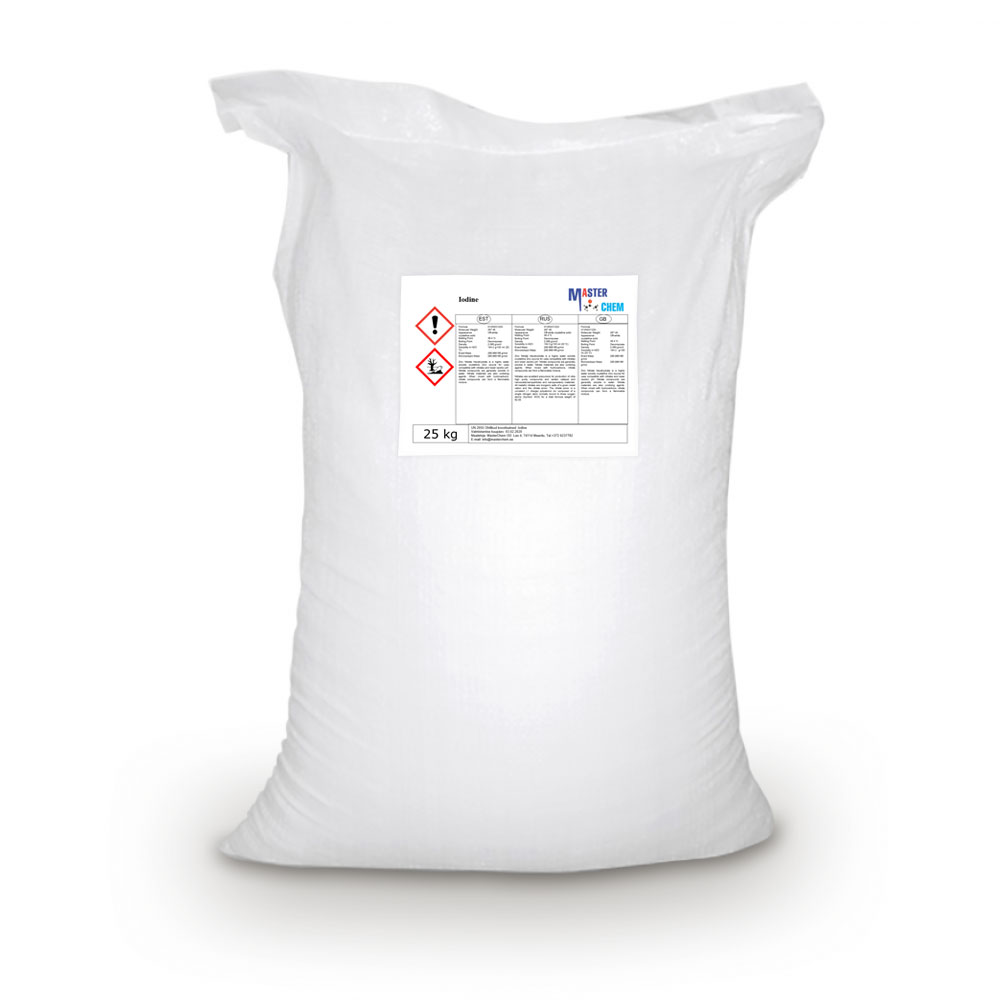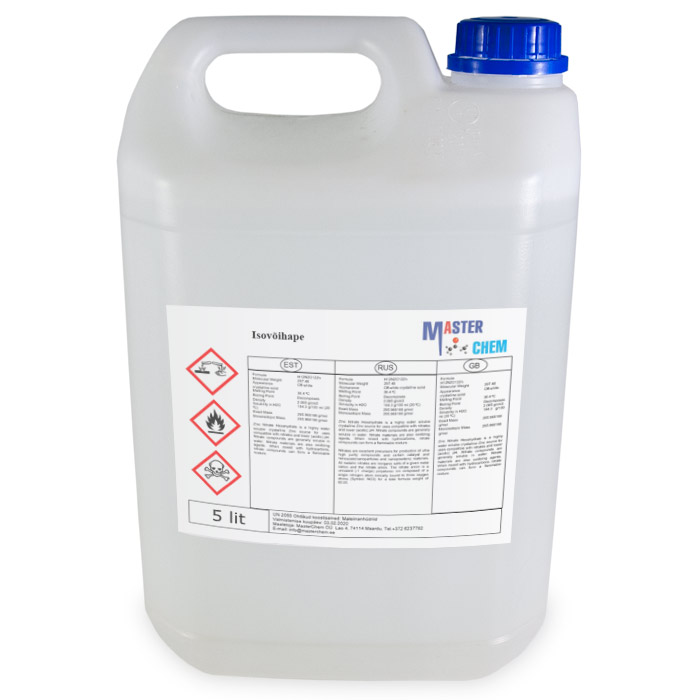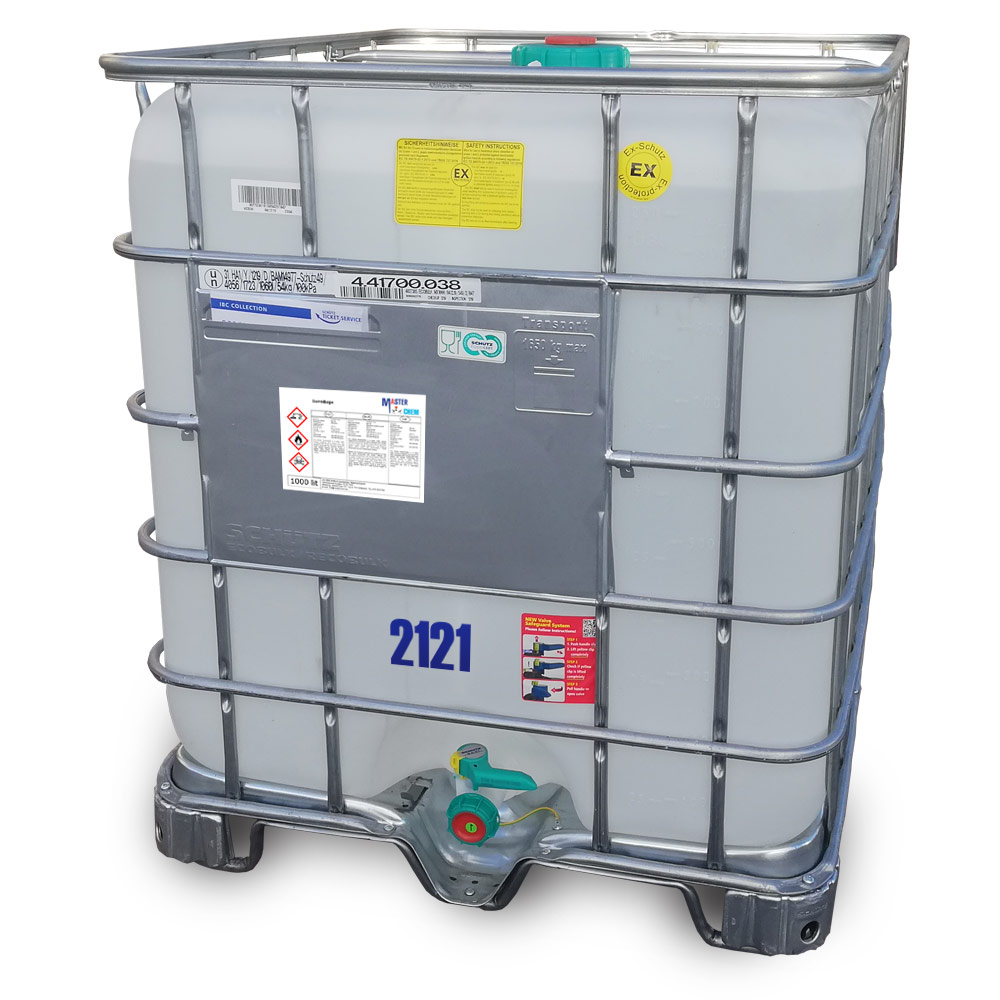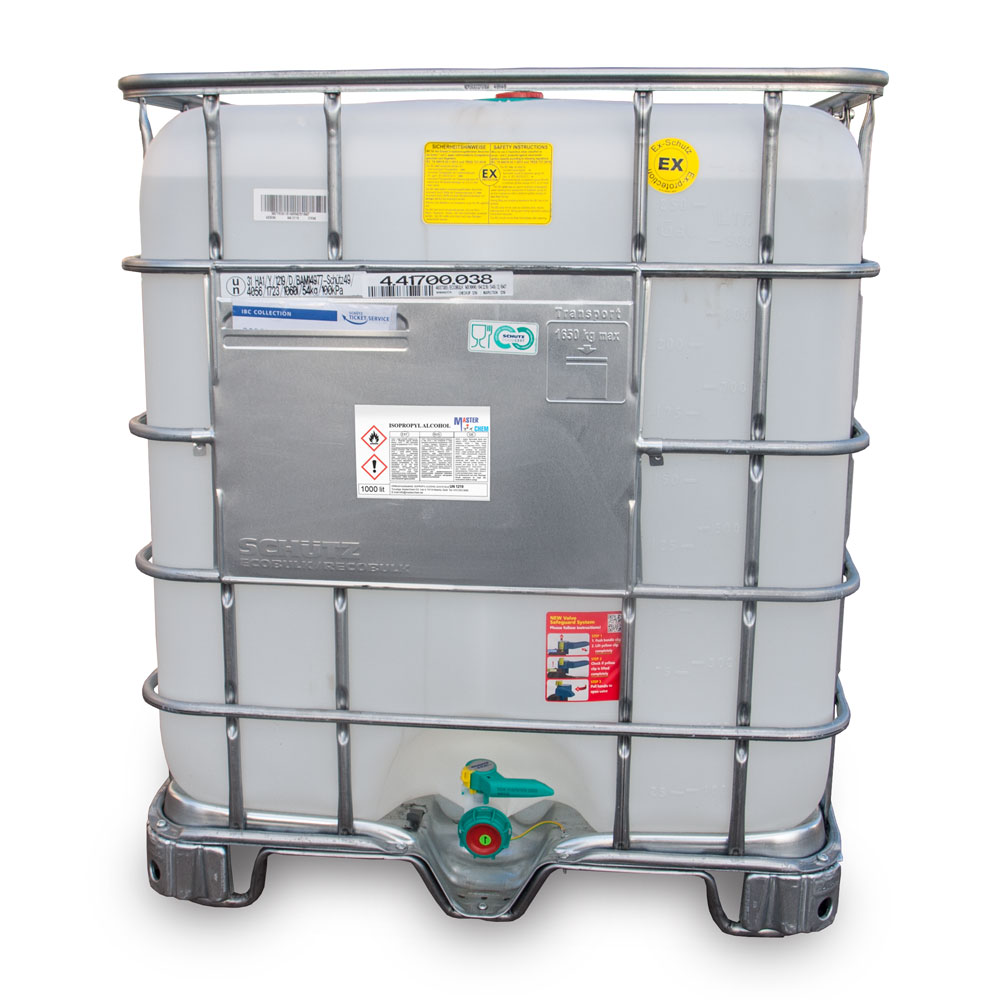Currently Empty: €0.00
Glucose Monohydrate (CAS 5996-10-1)
Information Industries: Pharmaceutical industry, Food industry , Feed industry CAS number: 5996-10-1 WE number: 200-075-1 Chemical formula: C6H12O6·H2O Molar mass: 198,17 g/mol Customs tariff code: 170230
Glycerine (CAS 56-81-5)
Other names: Glycerin, Glycerine, Propanetriol, 1,2,3-Trihydroxypropane, 1,2,3-Propanetriol
Glycerine also called glycerol, is a simple polyol compound. It is a colorless, odorless, viscous liquid that is sweet-tasting and non-toxic. The glycerine backbone is found in lipids known as glycerides. Due to having antimicrobial and antiviral properties it is widely used in FDA approved wound and burn treatments. Conversely, it is also used as a bacterial culture medium. It can be used as an effective marker to measure liver disease. It is also widely used as a sweetener in the food industry and as a humectant in pharmaceutical formulations. Owing to the presence of three hydroxyl groups, glycerine is miscible with water and is hygroscopic in nature.
CAS: 56-81-5
Glycerol (CAS 56-81-5)
Other names: Glycerin, Glycerine, Propanetriol, 1,2,3-Trihydroxypropane, 1,2,3-Propanetriol
Glycerol (also called glycerine or glycerin; see spelling differences) is a simple polyol compound. It is a colorless, odorless, viscous liquid that is sweet-tasting and non-toxic. The glycerol backbone is found in all lipids known as triglycerides. It is widely used in the food industry as a sweetener and humectant and in pharmaceutical formulations. Glycerol has three hydroxyl groups that are responsible for its solubility in water and its hygroscopic nature.
CAS: 56-81-5
Glycerol monostearate (CAS 123-94-4)
Glycerol monostearate (CAS 123-94-4)
Glycerol monostearate, commonly known as GMS, is a monoglyceride commonly used as an emulsifier in foods. It takes the form of a white, odorless, and sweet-tasting flaky powder that is hygroscopic. Chemically it is the glycerol ester of stearic acid.
GMS is a food additive used as a thickening, emulsifying, anticaking, and preservative agent; an emulsifying agent for oils, waxes, and solvents; a protective coating for hygroscopic powders; a solidifier and control release agent in pharmaceuticals; and a resin lubricant. It is also used in cosmetics and hair-care products.
GMS is largely used in baking preparations to add “body” to the food. It is somewhat responsible for giving ice cream and whipped cream their smooth texture. It is sometimes used as an antistaling agent in bread.
It can also be used as an additive in plastic, where GMS works as an antistatic and antifogging agent. This is common in food packaging.
Glycine (CAS 56-40-6)
Glycine (CAS 56-40-6)
Glycine is an amino acid that has a single hydrogen atom as its side chain. It is the simplest stable amino acid (carbamic acid is unstable), with the chemical formula NH2‐CH2‐COOH. Glycine is one of the proteinogenic amino acids. It is encoded by all the codons starting with GG (GGU, GGC, GGA, GGG). Glycine is integral to the formation of alpha-helices in secondary protein structure due to its compact form. For the same reason, it is the most abundant amino acid in collagen triple-helices. Glycine is also an inhibitory neurotransmitter – interference with its release within the spinal cord (such as during a Clostridium tetani infection) can cause spastic paralysis due to uninhibited muscle contraction.
Glycine is a colorless, sweet-tasting crystalline solid. It is the only achiral proteinogenic amino acid. It can fit into hydrophilic or hydrophobic environments, due to its minimal side chain of only one hydrogen atom. The acyl radical is glycyl.
Hand sanitizer MasterChem E80 5L
Gel for the same price
MasterChem E80 is a universal hand sanitizer. Contains glycerin to prevent dry skin. It is a mixture of ethanol and glycerin.
Actively disinfects, deodorizes and cleans, does not require rinsing.
Provides comprehensive protection against major infections, fungi and bacteria.
Due to its properties, MasterChem E80 is especially suitable for hospitals, public spaces, gyms and social gatherings. Suitable for both household and professional use.

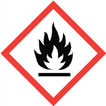
Hand sanitizer MasterGel E80
MasterGel E80 is a universal hand sanitizer. Contains glycerin to prevent dry skin. It is a mixture of ethanol, glycerin and propylene glycol.
Actively disinfects, deodorizes and cleans and does not need to be rinsed.
Due to its properties, MasterGel E80 is especially suitable for hospitals, public spaces, gyms and social gatherings. Suitable for both household and professional use.
Using:
• Hygienic hand antiseptic:
Apply 3 ml of MasterChem E80 to hands and massage into hands for 30 seconds.
• Surgical hand antiseptic:
Rub MasterChem E80 into hands 2 times, 3-6 ml each. (It is important to make sure that the entire surface to be treated is covered with the solution). Rubbing takes 1.5 minutes. Work both hands and forearms.
Use biocide safely! Be sure to read the attached information before use!
Certificate of registration of biocidal product No. 2121/20
Hydrochloric Acid 33%, 37% (CAS 7647-01-0)
Hydrochloric Acid 33%, 37% (CAS 7647-01-0)
Hydrochloric acid, also known as muriatic acid, is an aqueous solution of hydrogen chloride. It is a colorless solution with a distinctive pungent smell. It is classified as a strong acid. It is a component of the gastric acid in the digestive systems of most animal species, including humans. Hydrochloric acid is an important laboratory reagent and industrial chemical.
Physical properties of hydrochloric acid, such as boiling and melting points, density, and pH, depend on the concentration or molarity of HCl in the aqueous solution. They range from those of water at very low concentrations approaching 0% HCl to values for fuming hydrochloric acid at over 40% HCl.
Hydrochloric acid as the binary (two-component) mixture of HCl and H2O has a constant-boiling azeotrope at 20.2% HCl and 108.6 °C (227 °F). There are four constant-crystallization eutectic points for hydrochloric acid, between the crystal form of [H3O]Cl (68% HCl), [H5O2]Cl (51% HCl), [H7O3]Cl (41% HCl), [H3O]Cl·5H2O (25% HCl), and ice (0% HCl). There is also a metastable eutectic point at 24.8% between ice and the [H7O3]Cl crystallization. They are all Hydronium salts.
Iodine (CAS 7553-56-2)
Iodine (CAS 7553-56-2)
Iodine is a chemical element with the symbol I and atomic number 53. The heaviest of the stable halogens, it exists as a semi-lustrous, non-metallic solid at standard conditions that melts to form a deep violet liquid at 114 degrees Celsius, and boils to a violet gas at 184 degrees Celsius. The element was discovered by the French chemist Bernard Courtois in 1811, and was named two years later by Joseph Louis Gay-Lussac, after the Greek ἰώδης “violet-coloured”.
Iodine occurs in many oxidation states, including iodide (I−), iodate (IO−
3), and the various periodate anions. It is the least abundant of the stable halogens, being the sixty-first most abundant element. It is the heaviest essential mineral nutrient. Iodine is essential in the synthesis of thyroid hormones. Iodine deficiency affects about two billion people and is the leading preventable cause of intellectual disabilities.
The dominant producers of iodine today are Chile and Japan. Iodine and its compounds are primarily used in nutrition. Due to its high atomic number and ease of attachment to organic compounds, it has also found favour as a non-toxic radiocontrast material. Because of the specificity of its uptake by the human body, radioactive isotopes of iodine can also be used to treat thyroid cancer. Iodine is also used as a catalyst in the industrial production of acetic acid and some polymers.
Isobutyric Acid (CAS 79-31-2)
Isobutyric Acid (CAS 79-31-2)
Isobutyric acid, also known as 2-methylpropanoic acid or isobutanoic acid, is a carboxylic acid with structural formula (CH3)2CHCOOH. It is an isomer of n-butyric acid. It is classified as a short-chain fatty acid. Deprotonation or esterification gives derivatives called isobutyrates.
Isobutyric acid is a colorless liquid with a somewhat unpleasant odor. It is soluble in water and organic solvents. It is found naturally in carobs (Ceratonia siliqua), in vanilla, and in the root of Arnica dulcis, and as an ethyl ester in croton oil.
Production
Isobutyric acid is manufactured by the oxidation of isobutyraldehyde, which is a byproduct of the hydroformylation of propylene.
It can also be prepared by the high pressure hydrocarboxylation (Koch reaction) from propylene: CH3CH=CH2 + CO + H2O → (CH3)2CHCO2H

